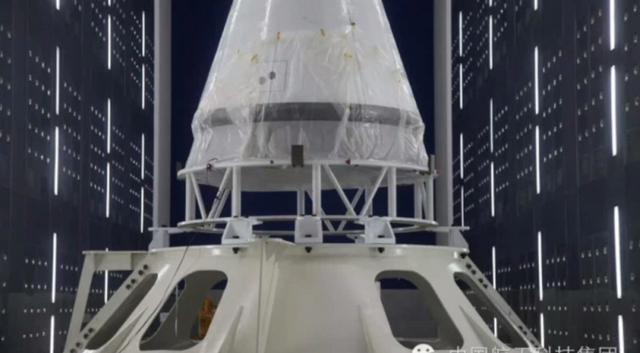newslink: China to test new spacecraft capable of carrying people in 2019

China will perform a first test flight of a full-scale 20-metric ton model of a successor to its Shenzhou spacecraft for human spaceflight next year, a senior official at the craft’s designer said last week.
The next-generation crewed spacecraft will be the payload for the first flight of the Long March 5B launch vehicle, a variant of the Long March 5 and designed for lofting large modules of the planned Chinese Space Station (CSS) into low Earth orbit.
In 2016, China use the first flight of the Long March 7 medium-lift rocket to launch a scale model of a new return module to test re-entry and landing profile for new spacecraft.
“The full model will be tested next year,” Li Ming, vice president of the China Academy of Space Technology (CAST), told SpaceNews, and confirmed the mission would include the full spacecraft including re-entry and orbital modules.
“The key issue is to test the new shape and reusable technologies. This capsule will be reused after recovery from space,” Li Ming said at the International Astronautical Congress, held Oct. 1-5 in Bremen, Germany.
The test of the spacecraft will not include environmental controls or systems required to support astronauts, but focus on testing avionics, separation events, heat shielding, parachutes and recovery operations, similar to the mission profile NASA’s Orion flew in 2014 when a Delta 4 heavy rocket sent the unmanned capsule 5,800 kilometers above the Earth to test re-entry systems.
CAST, a major spacecraft and satellite maker under the main contractor for the Chinese space program, is developing the Shenzhou successor to allow astronauts to move out of low Earth orbit and into deep space, including missions to the moon and Mars.
China currently uses 7.8-ton Shenzhou spacecraft, based on the Soyuz, for trips to low Earth orbit.To go beyond, the next-generation craft will need to handlethe harsher radiation environment of deep space and deal with reentering the Earth’s atmosphere at greater velocities.
Two versions of the new spacecraft are planned, with one having a mass of 14-metric tons and another of 20 tons. They will be capable of carrying four to six astronauts, according to earlier reports.
link.
Interesante!
#spanish
There's a space race going on. It's just rather low key compared to the past.